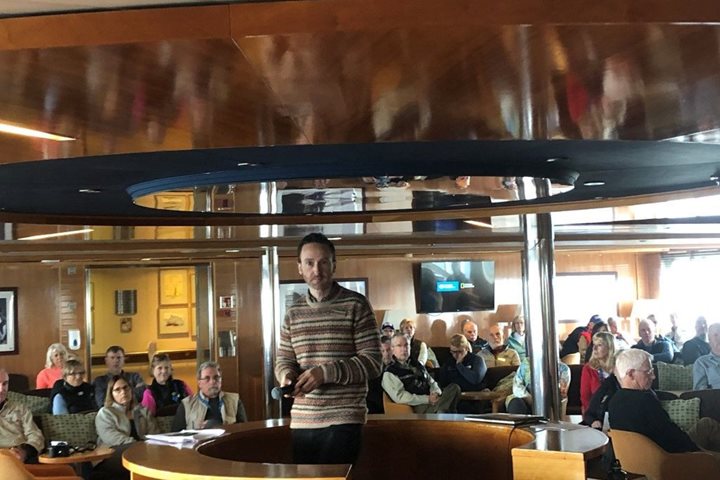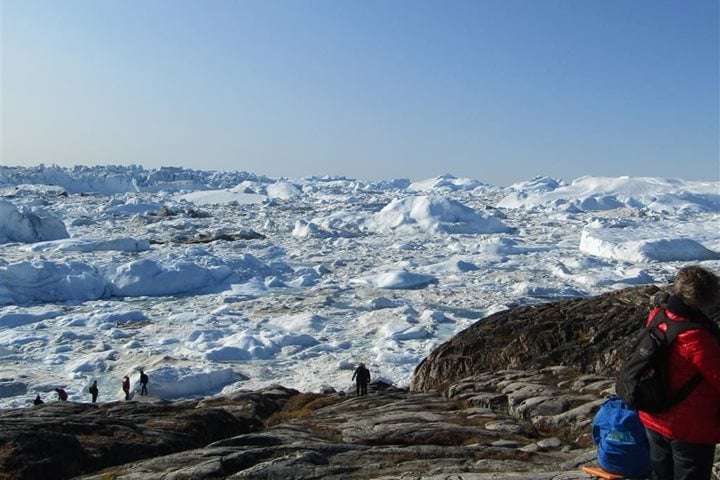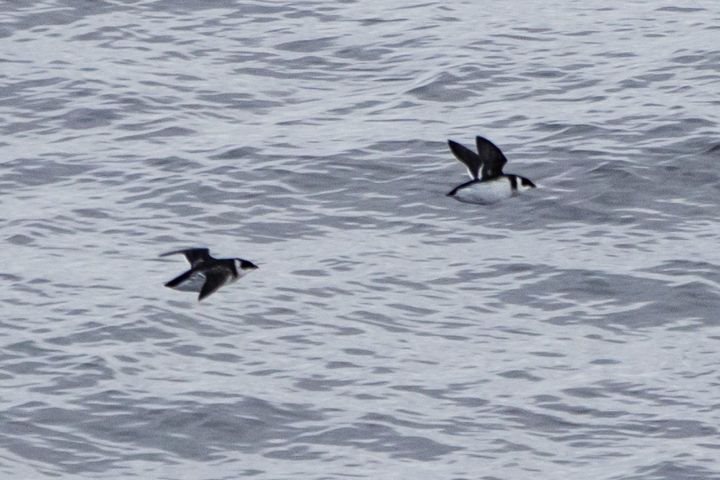This morning we awoke to fog so thick that we could barely see the bow of the National Geographic Explorer from the bridge as we navigated in Buchan Gulf, a deep gash carved in Baffin Island by the mighty Ice Age glaciers. Certainly less than ideal conditions for searching for the elusive narwhal, with its long tusk like the mythical unicorn, which was our plan for the morning.
Then, without a hint of hope, conditions began to improve when miraculously narwhals began to appear ahead of the ship, as we moved ever so slowly forward. Narwhals are known to be very shy, rarely showing anything except a weak blow from a single blowhole and marbled patterns on their back lacking a dorsal fin. Always keeping their distance, we had great binocular views that thrilled us all, when suddenly a young whale swim right under the bow, appearing so fast that none of us snapped a picture.
As the fog continued to clear, wisps of fog-like strokes from a painter’s brush clung to towering cliffs, as spires and mountaintops began to appear one after another. With each passing moment the scene changed and a strange thing happened—everyone out on deck was silent, except for the clicks of camera shutters and whispers of disbelief at what was unfolding before us, and in every direction. The glacially-carved landscape was on a scale that was unimaginable, like sailing into Yosemite Valley with not one, but dozens of Half Domes, which made me think of Ansel Adams and making black and white photos. The fractured, faulted, intruded, and deformed rocks exposed in the sheer cliffs date back to the Precambrian, more the 2 billion years ago when continents collided building the super-continent, Pangea.
With the sun out in full force a call came over the radio, momentarily breaking the spell, “Hotel Manager, we have a guest wanting to book a future trip.” The timing could not have been any better, as next year the National Geographic Explorer will return to this area on its way to making the first-ever transit of the Northwest Passage by Lindblad Expeditions-National Geographic. The next radio call brought us quickly back to the moment, “Hotel Manager, you may not want to plate lunch just yet, we see a white furry animal ahead.”
Indeed, lunch was delayed as we made a slow approach to observe a sleepy polar bear resting on the rocks just above the shoreline. It gazed at us once then fell back to sleep, before getting up slowly and nimbly walking across the boulders, stopping now and then to strike a pose, its well-groomed fur standing out in contrast to the dark, lichen-covered boulders. It’s always a humbling experience to see a polar bear in the wild, the top land predator in all the Arctic. As it navigated the rocks looking for its next napping spot, we finally went down to lunch.
To enjoy more of our good fortune we went ashore this afternoon to explore the tundra. Intrepid long walkers headed up the prefect U-shaped valley, while the rest of us explored the Thule archeological sites along the base of the hillside and photographed wildflowers and metamorphic rock textures displayed in the boulders. Returning to the landing, to our surprise, a pulled-pork barbeque awaited us, complete with beer and soft drinks. What a great way to celebrate the day—one of the best ever in the high Arctic!







